2023 Honda Hornet
Honda’s new CB750 Hornet was unveiled in Europe today and now we can see the new machine with the covers off, bring you the details and 2023 Honda CB750 Hornet specifications. It looks pretty damn good.
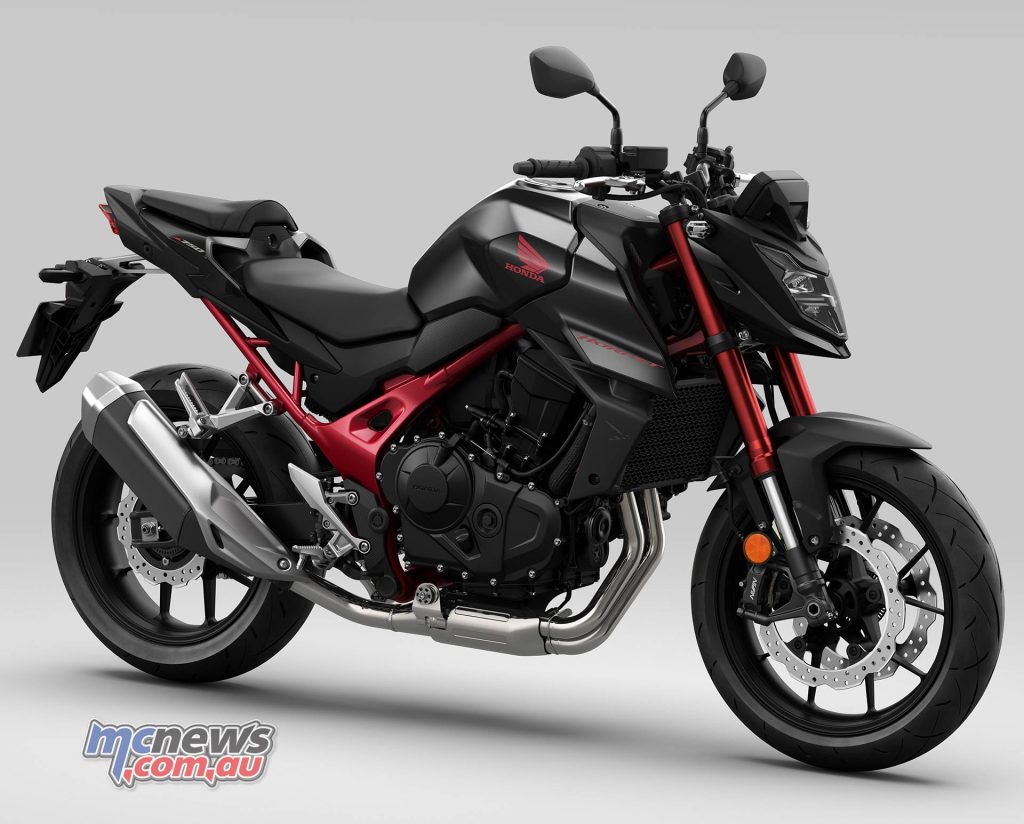
Honda generally does this category of bike very well. We are big fans of the CBR500R/CB500F/CB500X family here at MCNews.com.au, and we hope this new CB750 Hornet steps things up even further in the value stakes.
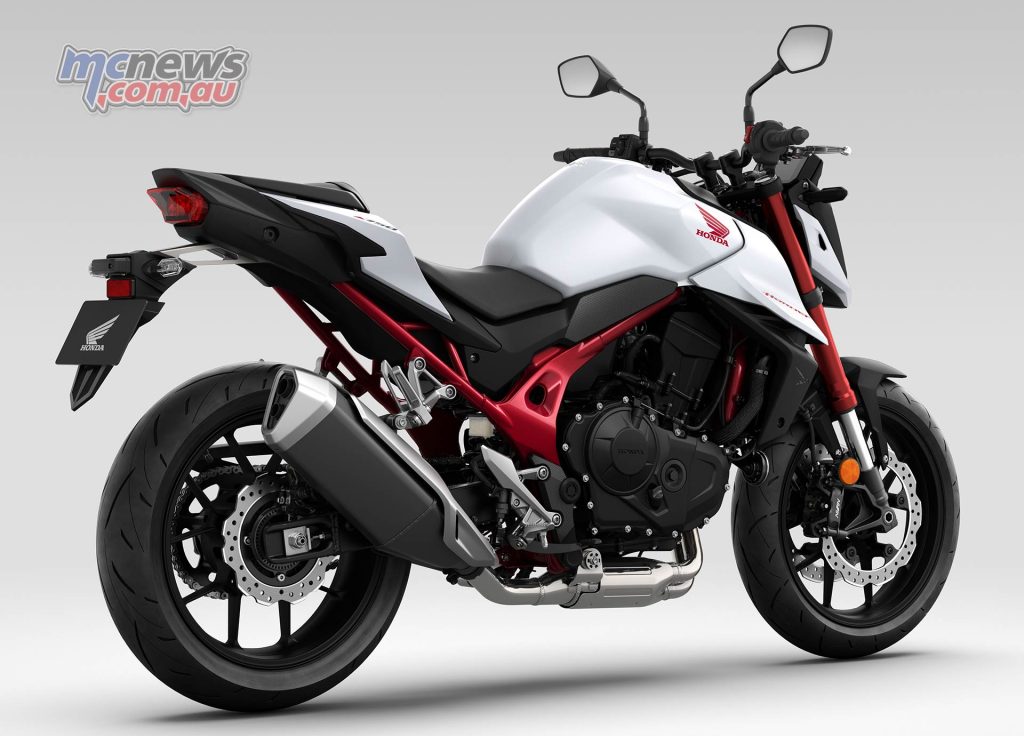
To make the engine as compact as possible there’s no balancer drive gear; the primary drive gear doubles up duties and also spins the balance shaft.
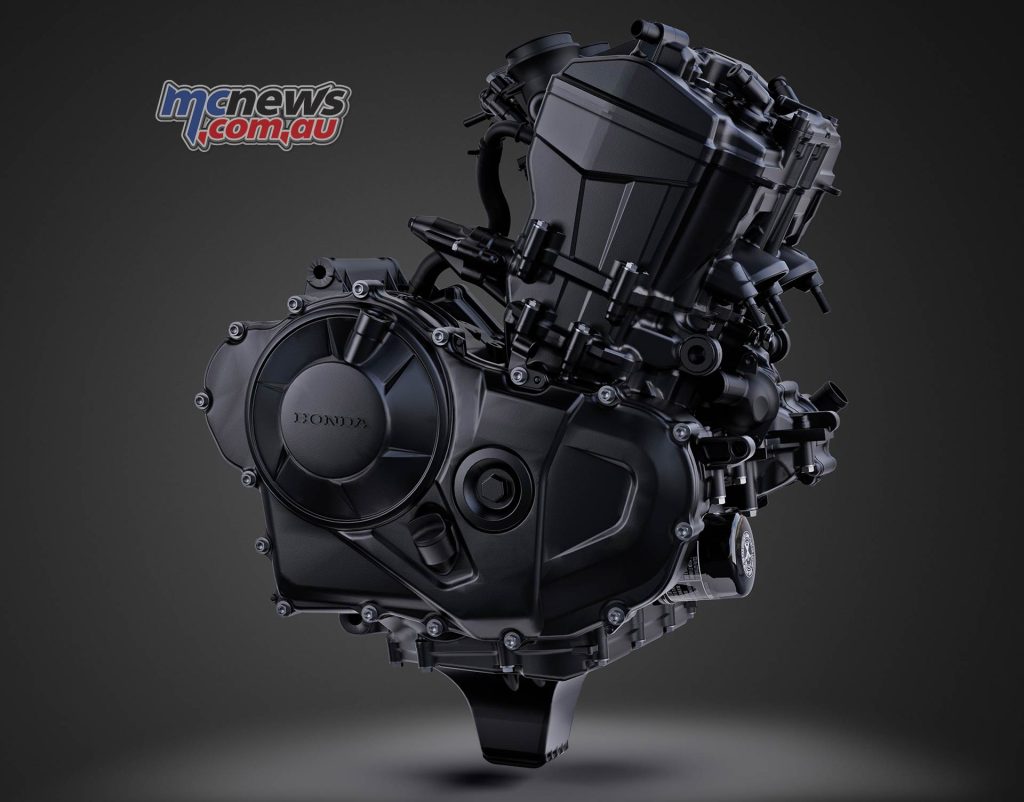
The water pump is tucked away inside the left-hand engine cover and there’s no need for a water-cooled oil-cooler.
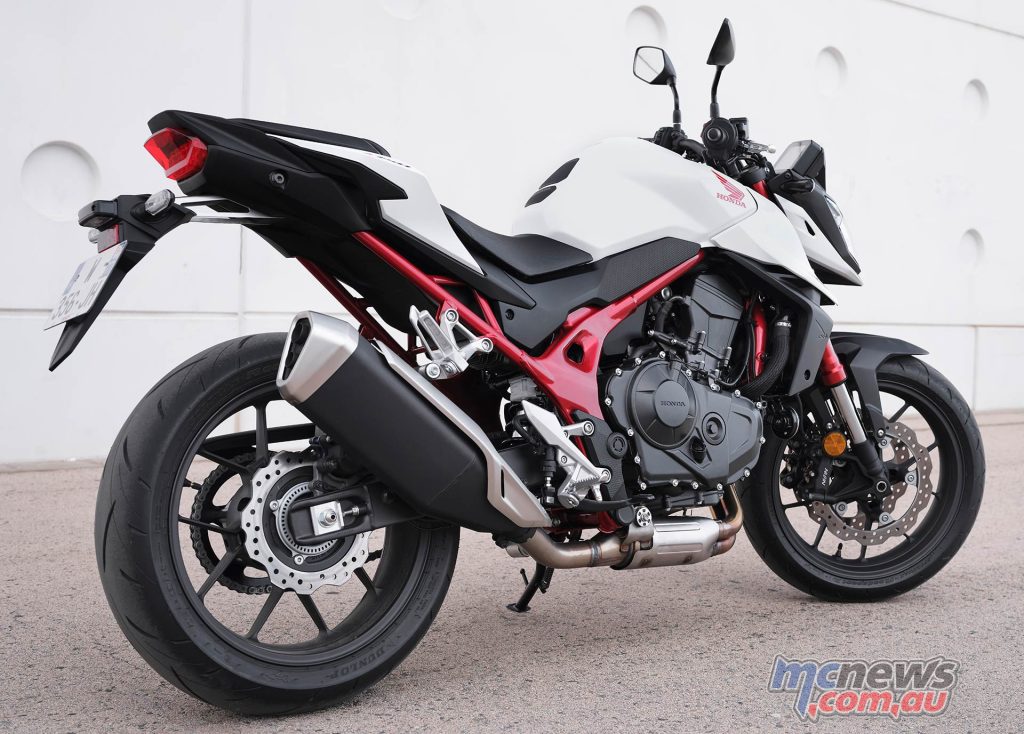
The cylinders use a Ni-SiC (Nickel-Silicon Carbide) coating, as also used in the CBR1000RR-R Fireblade and CRF450R.
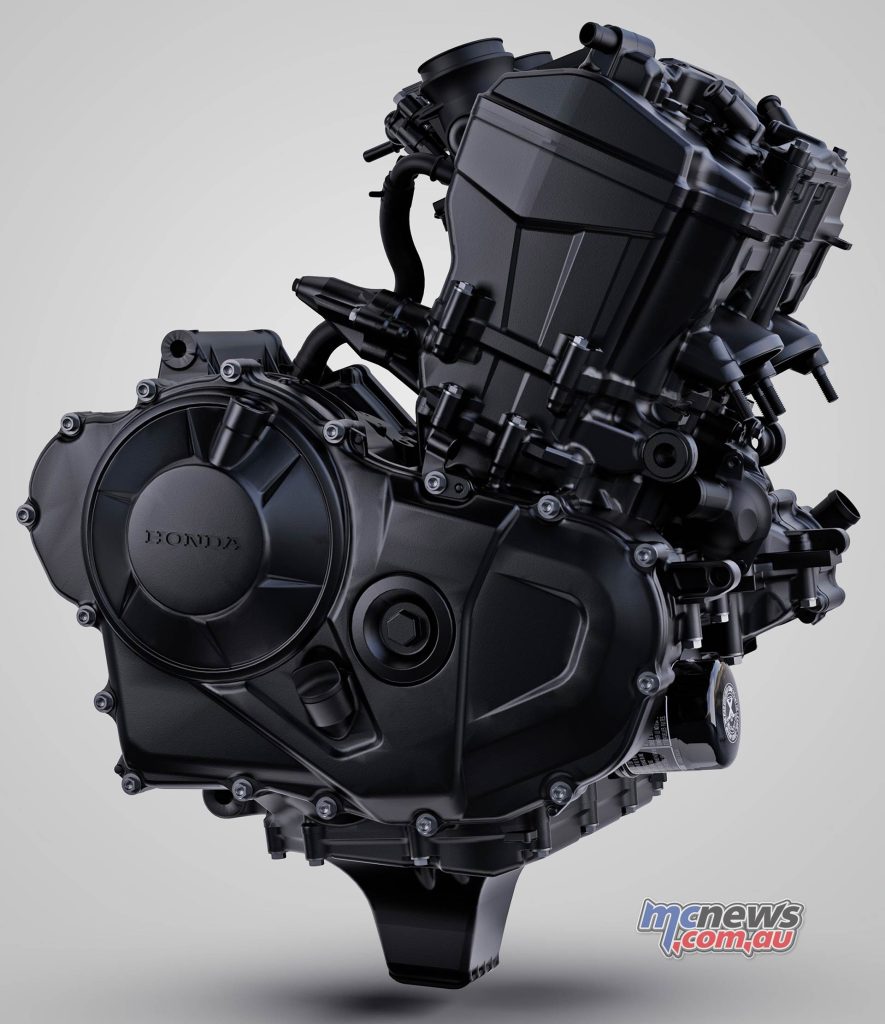
An assist/slipper clutch promises light lever feel, eases up-shifts and manages rear wheel slip under hard braking and rapid down-changes.
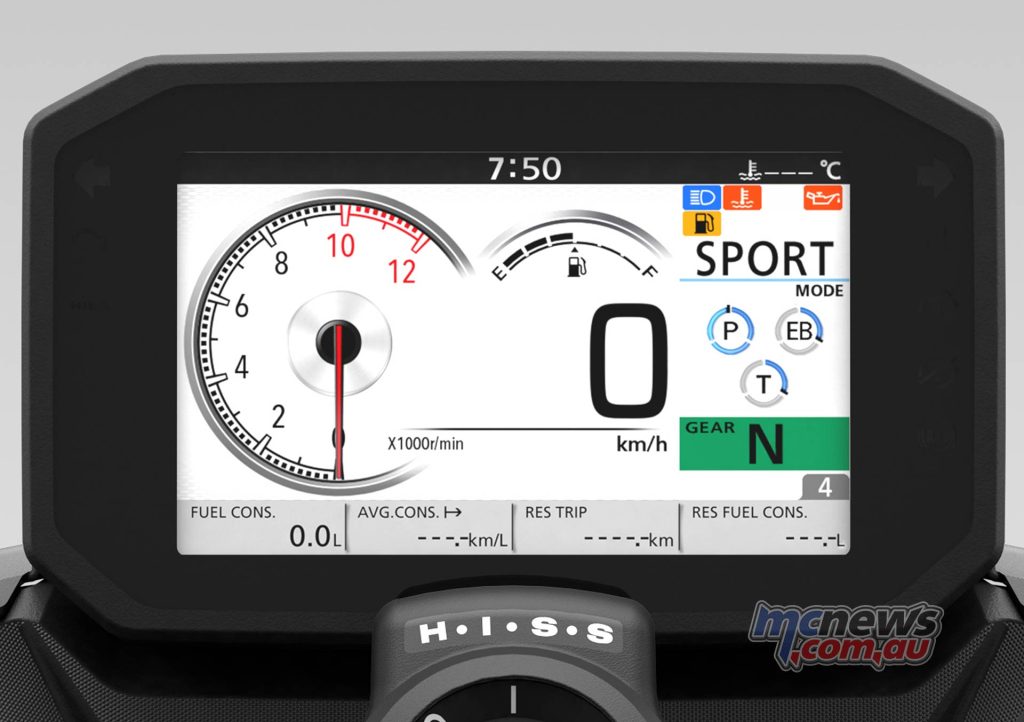
Throttle-By-Wire engine control offers three default riding modes, adjusting the engine’s delivery and feel to suit conditions and the rider’s intent; they’re easily switched and managed between the left handlebar mode switch and TFT screen.
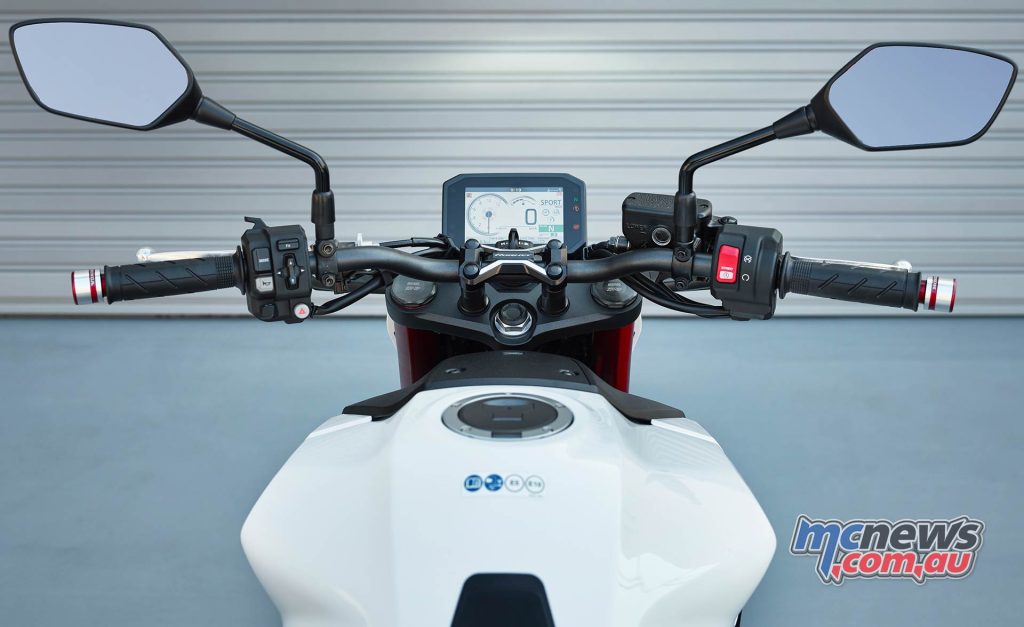
There are 3 levels of Engine Power (EP), Engine Brake (EB) and Honda Selectable Torque Control (HSTC) with integrated Wheelie Control available; HSTC can also be switched off. The riding modes offer different combinations of each parameter.
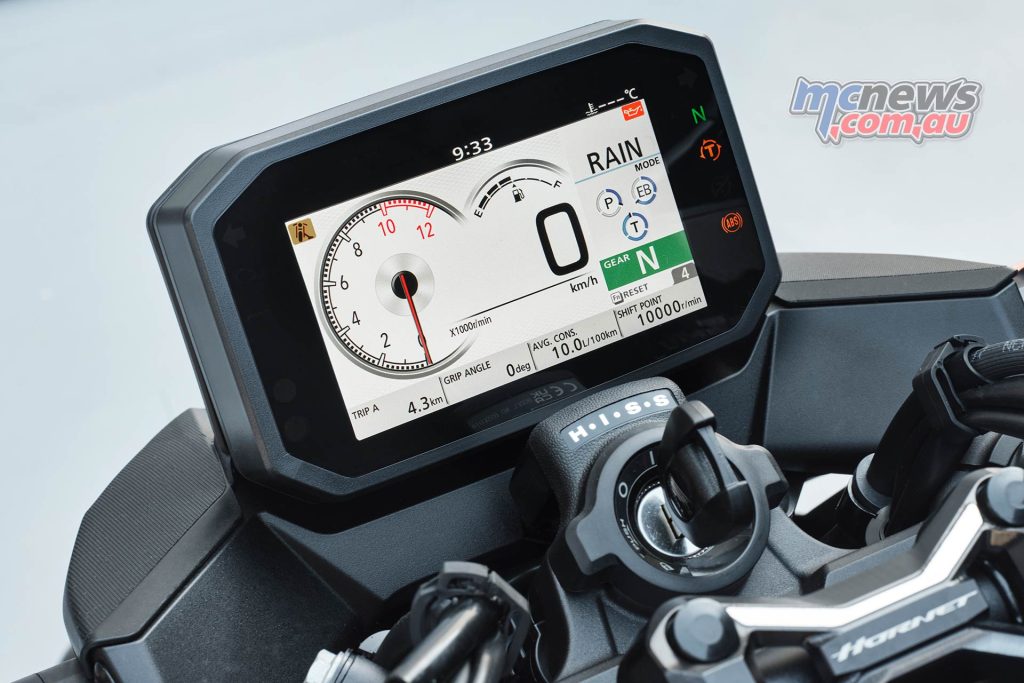
“SPORT” mode delivers maximum performance with minimum intervention. “STANDARD” is a well balanced setting for everyday riding. “RAIN” delivers the least aggressive power delivery, while “USER” allows the rider to choose between the 3 settings for each parameter and save the setting for future use.
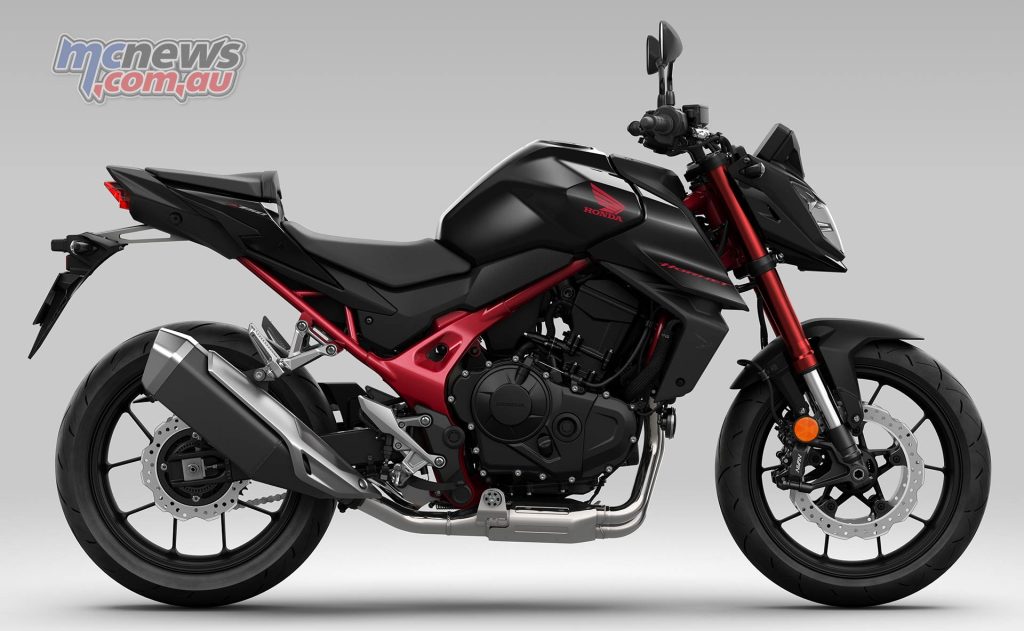
Seat height is a very manageable 795mm and the riding position is fairly upright, but with slightly rear-set footpegs for natural control and wide handlebars for leverage.
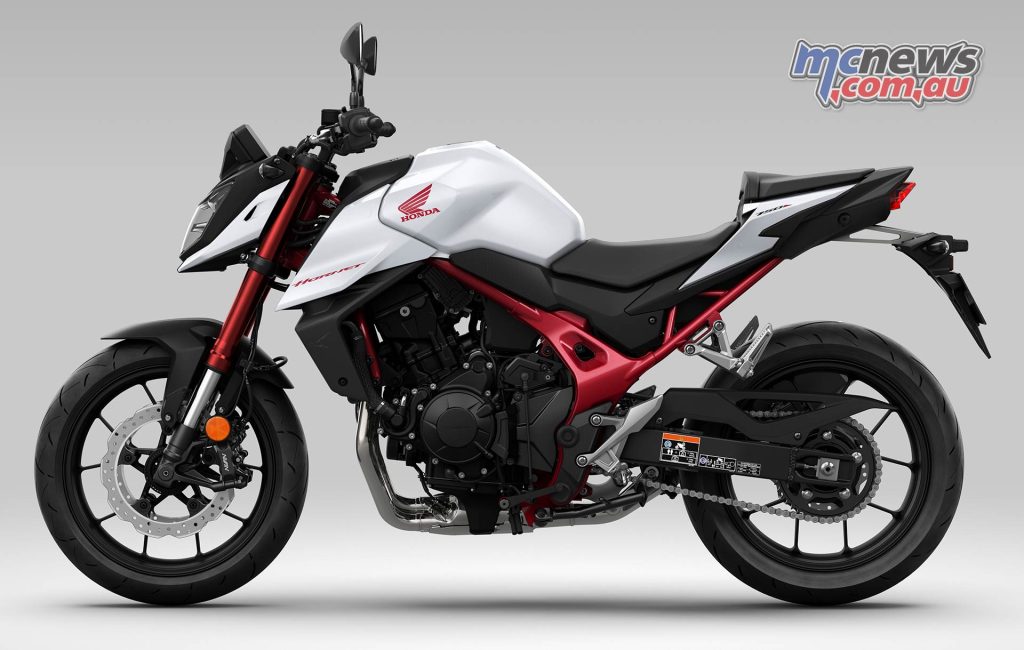
The rich specification list is headlined by a 5-inch TFT colour display. It offers four types of speed/rpm display (analogue or bar, according to rider preference) as well as fuel gauge/consumption, riding mode selection/engine parameters, gear selected and customisable up-shift point on the tachometer.
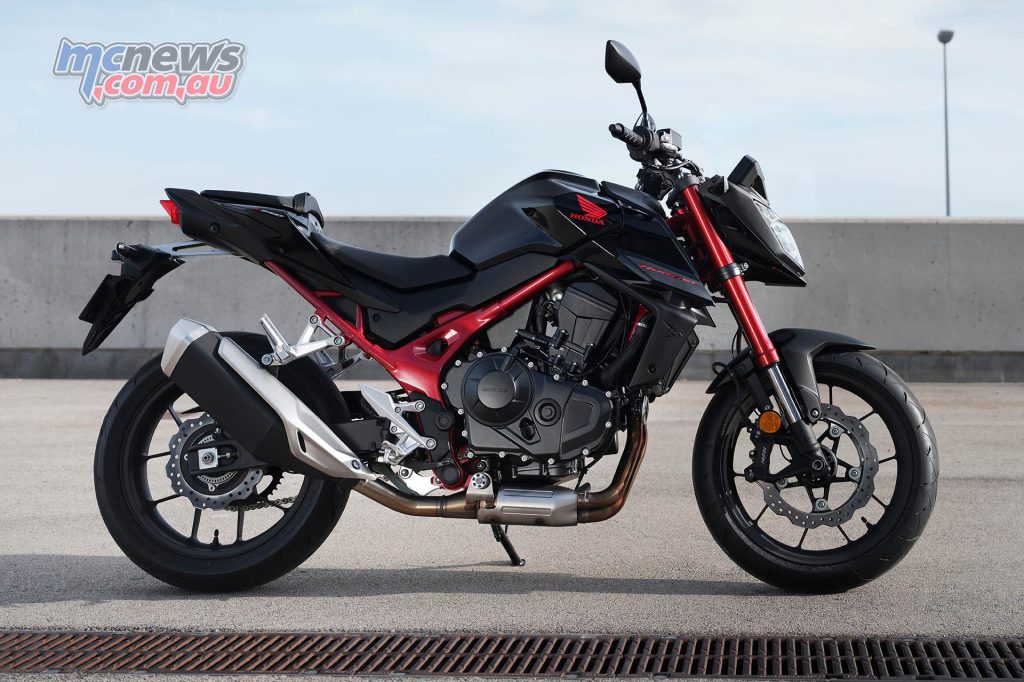
Also incorporated into the interface is the Honda Smartphone Voice Control System (HVCS), which links the rider to their Android and IOS smartphone while on the move and allows voice management of phone calls, messages, music and navigation. For the first time, HSVCS will also be accessible on IOS smartphones. A helmet-mounted headset is needed, and the smartphone connects to the dash via Bluetooth; management of HVCS is also possible using the buttons on the left switch-gear.
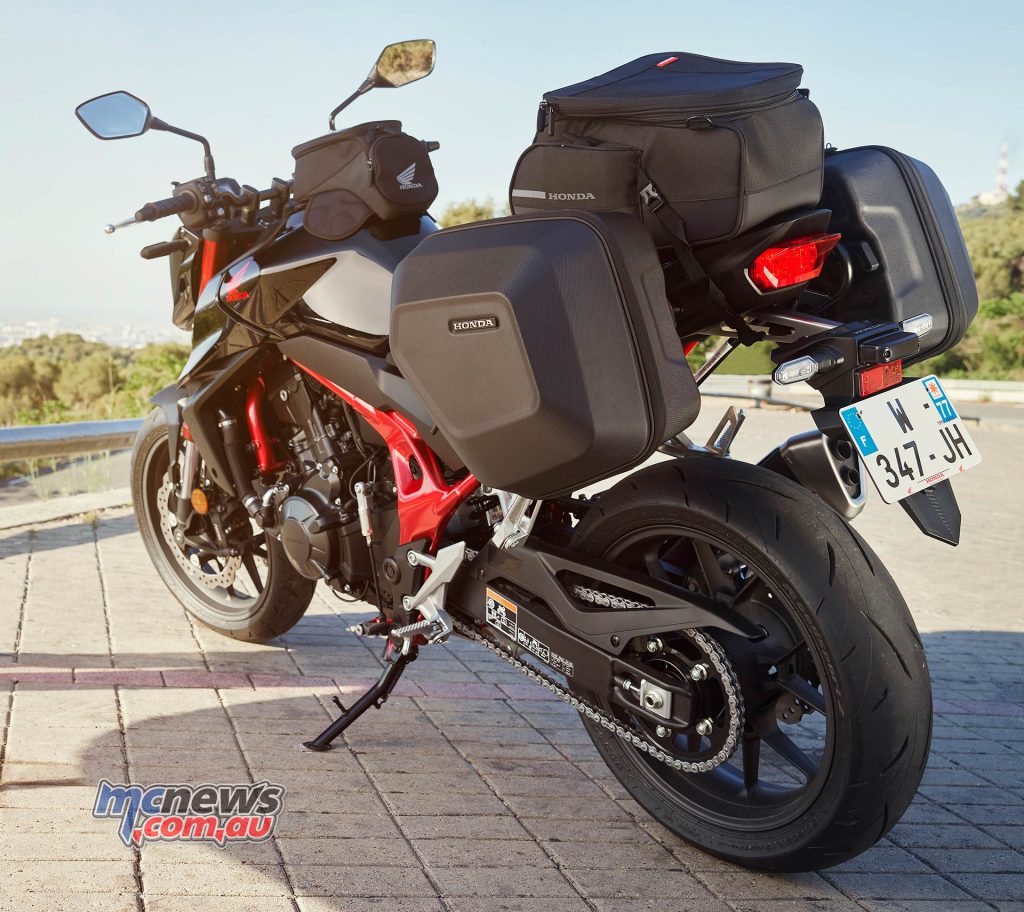
The Hornet’s steel diamond frame is lightweight, at just 16.6kg, but Honda promise that it provides produced a hugely strong platform, with rigidity balance to deliver feel and geometry set for agility.
Tipping the scales ready to ride at 190 kg it should prove a light and agile feel. With a pair of 296 mm discs and radian Nissin calipers up front it should pull up easily.
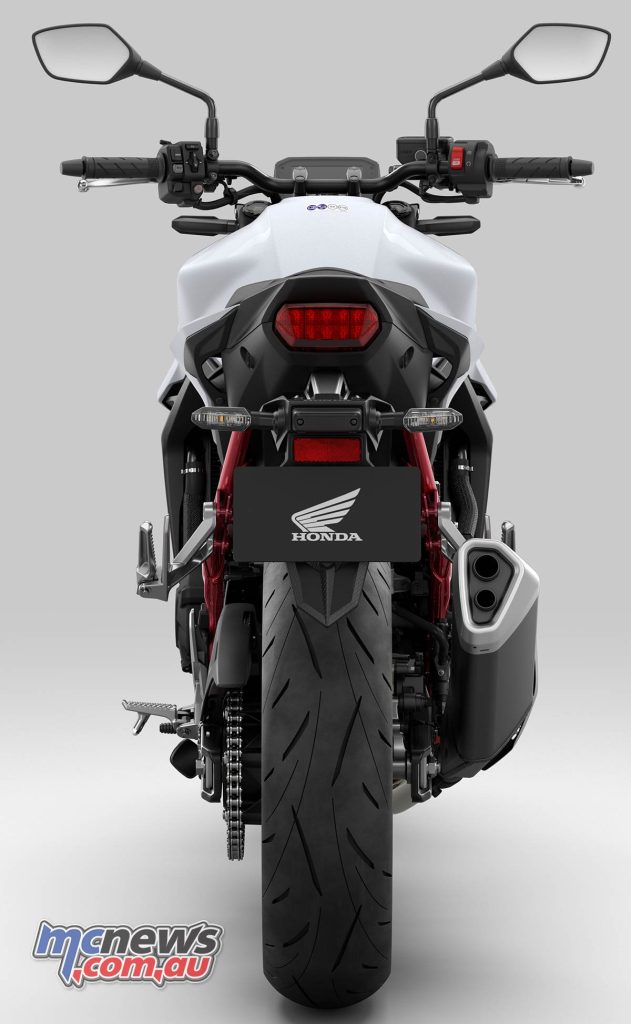
Hopefully the Showa 41 mm SFF-BP forks and pre-load adjustable rear shock are set up a little stiffer than a lot of the European developed Hondas, for us that will be the real question… Some of the images released with full touring kit suggest that the machine has been set-up to carry a decent load.
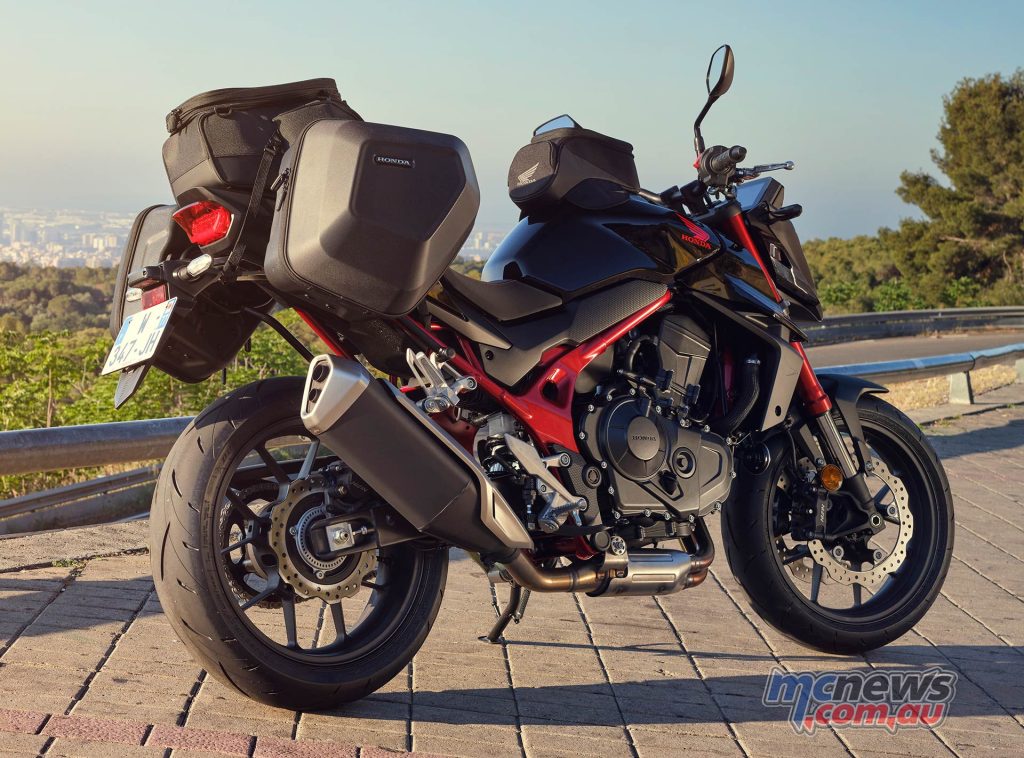
The new Hornet is expected in Australia in the second quarter of 2023 but Honda Australia can not offer any indicative pricing as yet.
2023 Honda Hornet Specifications
- Engine – 755 cc parallel twin, 270-degree crank
- Claimed Power – 90 horsepower at 9500
- Claimed Torque – 75 Nm at 7250 rpm
- Bore x Stroke – 87 x 63.5 mm
- Compression Ratio – 11:1
- Valves – Single cam, eight-valve, 35.5 mm inlet, 29 mm exhaust
- Transmission – Six speed
- L x W x H – 2090 x 780 x 1085 mm
- Wheelbase – 1420 mm
- Ground Clearance – 140 mm
- Seat Height – 795 mm
- Fuel Capacity – 15.2 Litres
- Kerb Weight – 190 kg
- Tyres – 120/70-17 (F); 160/60-17 (R)
- Forks – 41 mm inverted, 130 mm travel
- Shock – Pre-load adjustable, 150 mm travel
- Brakes – 2 x 296 mm discs (F), 1 x 240 mm disc rear























